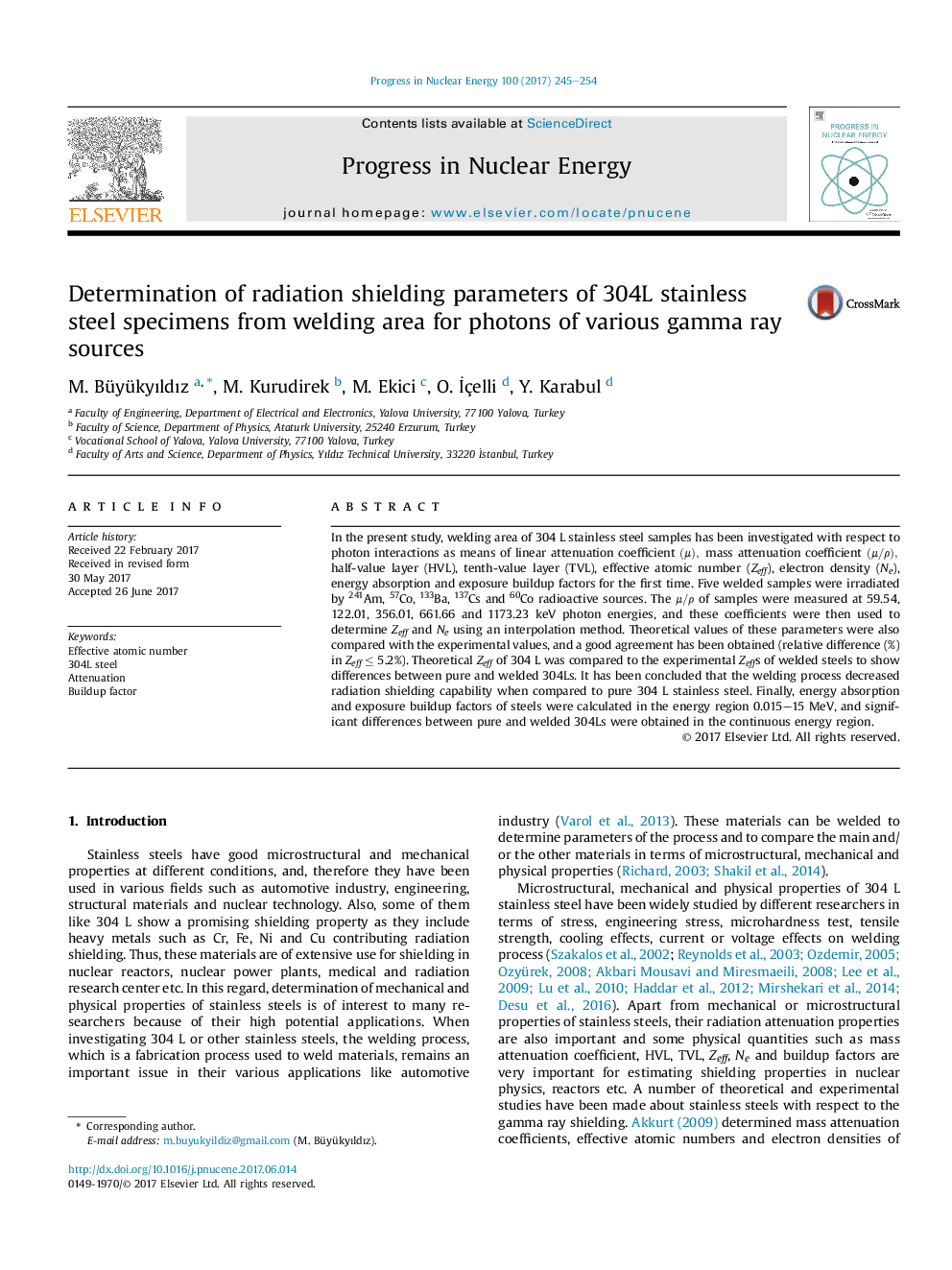| Article ID | Journal | Published Year | Pages | File Type |
|---|---|---|---|---|
| 5478182 | Progress in Nuclear Energy | 2017 | 10 Pages |
Abstract
In the present study, welding area of 304 L stainless steel samples has been investigated with respect to photon interactions as means of linear attenuation coefficient (μ), mass attenuation coefficient (μ/Ï), half-value layer (HVL), tenth-value layer (TVL), effective atomic number (Zeff), electron density (Ne), energy absorption and exposure buildup factors for the first time. Five welded samples were irradiated by 241Am, 57Co, 133Ba, 137Cs and 60Co radioactive sources. The μ/Ï of samples were measured at 59.54, 122.01, 356.01, 661.66 and 1173.23 keV photon energies, and these coefficients were then used to determine Zeff and Ne using an interpolation method. Theoretical values of these parameters were also compared with the experimental values, and a good agreement has been obtained (relative difference (%) in Zeff â¤Â 5.2%). Theoretical Zeff of 304 L was compared to the experimental Zeffs of welded steels to show differences between pure and welded 304Ls. It has been concluded that the welding process decreased radiation shielding capability when compared to pure 304 L stainless steel. Finally, energy absorption and exposure buildup factors of steels were calculated in the energy region 0.015-15 MeV, and significant differences between pure and welded 304Ls were obtained in the continuous energy region.
Related Topics
Physical Sciences and Engineering
Energy
Energy Engineering and Power Technology
Authors
M. Büyükyıldız, M. Kurudirek, M. Ekici, O. Ä°çelli, Y. Karabul,
